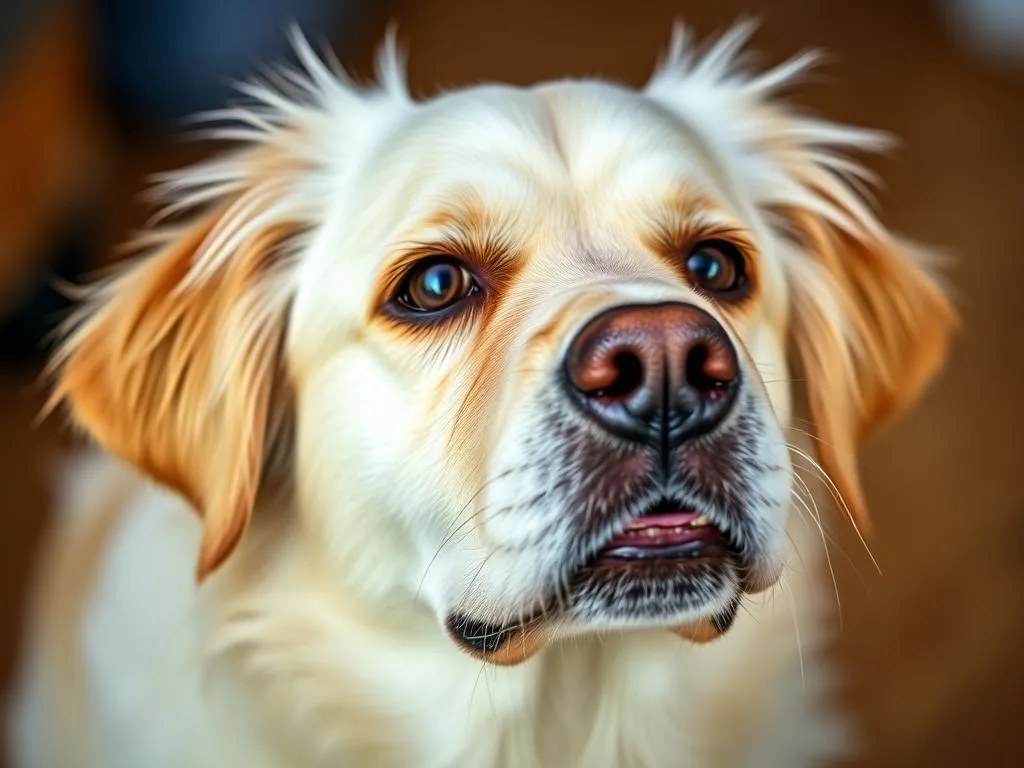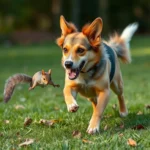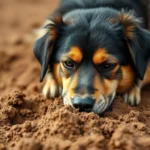
Dogs are known for their unique behaviors, many of which can leave pet owners scratching their heads. One of the most perplexing behaviors is their attraction to things that humans find unpleasant, such as feces, rotting food, or even their own body odors. To comprehend this behavior, it’s essential to delve into the canine olfactory system and the role smell plays in a dog’s life.
Understanding Dog Senses
The Canine Sense of Smell
Dogs possess an extraordinary sense of smell that surpasses our own by a significant margin. While humans have about 5 million olfactory receptors, dogs have approximately 300 million. This vast difference allows dogs to detect scents at incredibly low concentrations, making them highly skilled at identifying various odors in their environment.
The olfactory system of a dog is not just about recognizing scents; it also processes them in a way that provides a wealth of information about their surroundings. This includes details about other animals, potential food sources, and even emotional states conveyed through scent.
The Role of Scent in Dog Behavior
Scent plays a critical role in shaping a dog’s behavior and interactions. Dogs often use their noses to explore the world around them, gathering information that influences their emotions and actions. The connection between smell and memory is particularly strong in dogs; they can recall specific scents tied to past experiences, which can trigger various emotional responses.
For instance, a dog may become excited upon smelling the scent of a specific food or the presence of another dog, evoking memories of playtime or mealtime. This deep-rooted reliance on smell is a fundamental aspect of dog behavior and can provide insight into why dogs are drawn to certain odors, especially those that humans perceive as foul.
The Science Behind Scent Attraction
Why Dogs Are Attracted to Strong Scents
Understanding why dogs are attracted to strong, often unpleasant scents requires an exploration of their evolutionary background. Throughout history, dogs have been scavengers, relying on their keen sense of smell to find food and survive. Strong scents, such as decaying matter or animal waste, can indicate potential food sources that might be rich in nutrients.
This scavenging behavior is rooted in survival instincts, where dogs are naturally inclined to investigate odors that might lead them to food. Such behaviors have been reinforced over generations, solidifying their attraction to strong scents, even if those smells are distasteful to humans.
Chemical Composition of Odors
What constitutes a “bad” smell? In the animal kingdom, certain odors, such as decomposition or waste, are a natural part of life. These scents are often rich in specific chemicals that can attract dogs. For example, the scent of feces contains various organic compounds that signal the presence of other animals, which might be of interest to a dog.
Dogs are particularly drawn to the scent of carrion, as it represents a potential food source. This instinctual behavior is not merely a case of poor taste; it reflects a natural survival mechanism that has been honed over thousands of years.
Common “Bad” Smells that Attract Dogs
Feces and Urine
One of the most infamous behaviors of dogs is their attraction to feces, both their own and that of other animals. Dogs may be drawn to feces for several reasons. Firstly, feces contain information about other animals, including their diet, health, and territory. By investigating these smells, dogs can gather social and territorial cues that inform their behavior.
Additionally, the act of rolling in or sniffing at feces can be a way for dogs to mark their territory or communicate with other dogs. This behavior is not just a matter of poor hygiene; it serves a social purpose in the canine world.
Rotting Food and Carrion
The instinct to scavenge played a significant role in the evolution of dogs. Their attraction to rotting food or carrion is a direct result of their ancestral hunting instincts. Dogs have evolved to be opportunistic feeders, meaning they will take advantage of any available food source, including decomposing organic matter.
While humans might find the smell of decay repulsive, for dogs, it signals a potential meal that could be filled with nutrients. This behavior can be traced back to their wild ancestors, who relied on their ability to locate and consume food in various states of decay to survive.
Sweat and Body Odors
Interestingly, dogs are also intrigued by human scents, particularly sweat and body odors. The human body emits a variety of scents, including pheromones, which can carry information about an individual’s emotional state, health, and reproductive status. Dogs are adept at picking up these subtle cues, which can explain their fascination with human sweat.
This interest in human scent can also strengthen the bond between dogs and their owners. Dogs may seek out their owner’s scent as a source of comfort, reinforcing their attachment and sense of security.
Behavioral Implications of Smell Attraction
The Role of Scent in Dog Play
The appeal of scent extends beyond mere exploration; it also plays a crucial role in how dogs engage in play. Dogs often use their sense of smell during playtime, whether they are playing chase, hide-and-seek, or fetch. These games often involve the use of scent to track down toys or locate hidden treats.
Incorporating scent into play can enhance a dog’s mental stimulation and satisfaction. For instance, hiding treats in the garden or around the house encourages dogs to use their noses, providing both physical and mental exercise.
Training and Managing Smell-Driven Behavior
While a dog’s attraction to certain smells is natural, it can sometimes lead to undesirable behaviors, such as rolling in something foul or scavenging on walks. To manage these behaviors, pet owners can implement training strategies to redirect a dog’s focus away from unpleasant smells.
Positive reinforcement training can be particularly effective. Rewarding a dog for ignoring undesirable scents and focusing on their owner or a toy can help shift their attention. Additionally, providing engaging activities that stimulate a dog’s sense of smell, such as scent games or puzzle toys, can reduce their urge to explore unpleasant odors.
Health Implications and Considerations
Potential Risks of Smelling Bad Things
While dogs are naturally inclined to explore their environment through scent, there are potential health risks associated with their attraction to foul smells. Consuming or rolling in certain substances can expose dogs to harmful bacteria, parasites, or toxins. For instance, ingesting feces can lead to intestinal parasites, while rolling in spoiled food may result in skin irritations or infections.
Dog owners should monitor their pets closely, especially during outdoor activities, to prevent them from ingesting harmful substances. Regular veterinary check-ups and maintaining a proactive approach to dog hygiene can help mitigate these risks.
Veterinary Advice on Smell-Related Behavior
If a dog’s attraction to unpleasant smells becomes excessive or unusual, it may warrant a visit to the veterinarian. Certain medical conditions or behavioral issues can lead to changes in a dog’s olfactory preferences. Consulting a veterinary behaviorist can provide valuable insights into managing these behaviors effectively.
Veterinary professionals can offer tailored advice and strategies to ensure both the dog’s safety and the owner’s peace of mind. Addressing excessive smell-driven behaviors early on can prevent complications and reinforce positive habits.
Conclusion
Understanding why dogs love things that smell bad provides valuable insight into their behavior and instincts. Dogs rely heavily on their sense of smell to navigate their world, and their attraction to foul odors is rooted in evolutionary survival mechanisms. While these behaviors can be perplexing to us, they are a natural part of being a dog.
By recognizing the role of scent in a dog’s life, pet owners can better appreciate their furry companions and manage their behaviors effectively. Embracing a dog’s natural instincts while ensuring their safety through responsible pet ownership is key to fostering a happy and healthy relationship.









